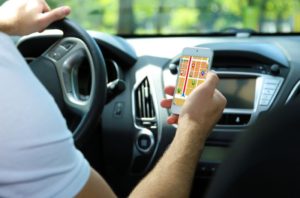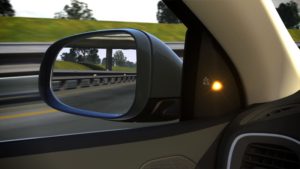So, we are sending our kids back to school. Or not. Or maybe in-school Monday and virtual Tuesday. But older kids are still using their cars to get to work and meet up with their small groups — hopefully safely while socially distancing. What we do know is there are a lot of teens who have not returned to college whose fearful parents aren’t exactly enthusiastic about public transportation. A good used car is still the typical teenage rite of passage, especially now that taking the bus has been ruled out. But as concerned parents, we can outfit our teen drivers today’s technology to make it as safe as possible.
IIHS Study Finds Teens in Older Cars
 According to a new study by the Insurance Institute for Highway Safety, more than a quarter of teen drivers killed in crashes between 2013 and 2017 were driving micro, mini or small cars. Nearly two-thirds were driving vehicles that were six to 15 years old, data that held constant with a 2008-12 report. In both periods, adults who were killed in crashes were riding in newer, larger vehicles much more often than were teens who were killed. Meaning adults are getting the better vehicles.
According to a new study by the Insurance Institute for Highway Safety, more than a quarter of teen drivers killed in crashes between 2013 and 2017 were driving micro, mini or small cars. Nearly two-thirds were driving vehicles that were six to 15 years old, data that held constant with a 2008-12 report. In both periods, adults who were killed in crashes were riding in newer, larger vehicles much more often than were teens who were killed. Meaning adults are getting the better vehicles.
Data on vehicle miles traveled from the 2017 National Household Travel Survey also suggest teens tend to drive older cars than adults drive, though the survey doesn’t include information about vehicle size. For teens, more than half the miles they drove were logged in vehicles more than 11 years old, while less than 30 percent of the miles adults drove were in cars that old, the survey found.
“It’s understandable that parents don’t want to shell out big bucks for their teen’s first car, and they probably don’t realize how much safer a newer, larger vehicle is,” says IIHS research scientist Rebecca Weast, lead author of the paper. “Small vehicles don’t protect as well in a crash, and older vehicles are less likely to be equipped with essential safety equipment.”
This is where the mobile electronics aftermarket can shine and help implement today’s technologies into older vehicles.
For example, one technology that should be standard for any concerned parent is a collision avoidance system. Once you experience the technology on a new car, you’ll know it is perfect for younger drivers who may not being paying attention. If your vehicle is approaching a vehicle or obstacle, audible and visual alerts tell the driver to apply the brakes NOW! Unfortunately, youth always feel they are invincible and have short attention spans. Just ask anyone who uses TikTok. Glancing down to change a radio station could be fatal. Or they may just nudge the vehicle’s bumper in front of them … but that can turn into a two-year whiplash lawsuit.
As much as we believe our teens won’t be looking at their devices while they drive, sometimes the temptation is too great. In addition to installing apps on the device itself that force it to turn off while the vehicle is being driven, a forward-warning collision system is a failsafe. We like redundancy when it comes to our children’s safety.
Blind Spot Awareness
 Another technology that should be installed is blind spot detection systems. As a parent, you probably have that nice icon that appears on your side view mirror that alerts you if someone is in your blind spot. It even goes a step further: When you engage the turn signal, you’ll get an audible warning.
Another technology that should be installed is blind spot detection systems. As a parent, you probably have that nice icon that appears on your side view mirror that alerts you if someone is in your blind spot. It even goes a step further: When you engage the turn signal, you’ll get an audible warning.
This same technology can be implemented in your teen’s car for a reasonable cost. Even if you think your teen isn’t driving on the highway, the alert can help a novice driver on any road with more than two lanes.
Looking for OEM features and Retrofitting
According to the IIHS, teens were less likely to be driving vehicles equipped with standard side airbags and electronic stability control (ESC) and more likely to be driving models on which those features aren’t even options — the typical hand-me-down car or used-car-lot special. The aftermarket can narrow the playing field by implementing electronic safety features such as collision avoidance systems and blind spot protection systems on older vehicles.
“Despite everything we know about young drivers and crash risk, teens are still driving the least safe vehicles,” Weast says.
If you have a teenager, your local VZAN retailer can help you get imperative safety devices retrofitted into their older rides first. Then you can begin the conversation on audio and connectivity upgrades after the essentials are installed.


